Michael J. Behe's Blog, page 472
June 6, 2019
Researchers: Declining Neanderthal fertility caused extinction, not violence
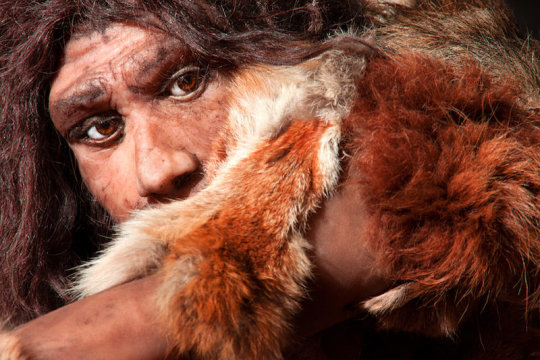 Neanderthal (artist’s conception)/ © procy_ab / Adobe Stock
Neanderthal (artist’s conception)/ © procy_ab / Adobe Stock From ScienceDaily:
The authors saw that in their model, extinction would have been possible within 10,000 years with a decrease in fertility rates of young (
The authors intended to explore possible Neanderthal extinction scenarios rather than to posit any definitive explanation. However, the researchers note that this study is the first to use empirical data to suggest that relatively minor demographic changes, such as a reduction in fertility or an increase in infant mortality, might have led to Neanderthal extinction. The authors note that modelling can be a useful tool in studying Neanderthals.
The authors add: “This study of the disappearance of the Neanderthals published today in PLOS ONE does not attempt to explain “why” the Neanderthals disappeared, but to identify “how” their demise may have taken place. This original approach is made on the basis of demographic modeling. The results suggest that a very small reduction in fertility may account for the disappearance of the Neanderthal population. According to this research, this decrease did not concern all female Neanderthals, but only the youngest (less than 20 years old).” Paper. (open access) – Anna Degioanni, Christophe Bonenfant, Sandrine Cabut, Silvana Condemi. Living on the edge: Was demographic weakness the cause of Neanderthal demise? PLOS ONE, 2019; 14 (5): e0216742 DOI: 10.1371/journal.pone.0216742 More.
Demographic decline is insidious because its pace appears slow in human terms (generations) but eventually, a freefall can occur. For example, young Neanderthals would eventually find themselves joining other groups because there aren’t enough other Neanderthals around. And the rest is… 23 and me.
See also: Neanderthal Man: The long-lost relative turns up again, this time with documents
and
A deep and abiding need for Neanderthals to be stupid. Why?
Follow UD News at Twitter!
Copyright © 2019 Uncommon Descent . This Feed is for personal non-commercial use only. If you are not reading this material in your news aggregator, the site you are looking at is guilty of copyright infringement UNLESS EXPLICIT PERMISSION OTHERWISE HAS BEEN GIVEN. Please contact legal@uncommondescent.com so we can take legal action immediately.
Plugin by Taragana
Knuckle study might shed light on whether ancient humans walked or swung from trees
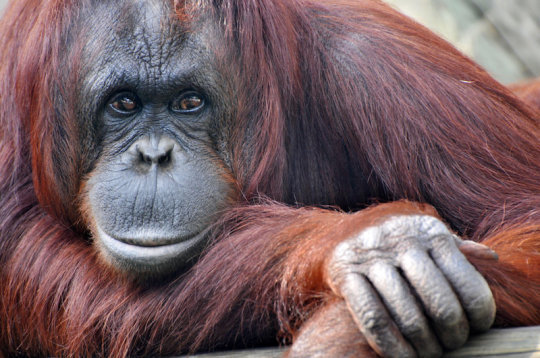
Orangutan (stock image)// © Glenda Powers / Adobe Stock
Depending on what their bones show. From ScienceDaily:
The study compared the internal bone structure of the knuckle joints in chimpanzee, bonobo, orangutan and gorilla hands, to assess whether this bone structure records how these apes moved when knuckle-walking on the ground or hanging from trees.
The researchers found the knuckle joints of orang-utans were consistent with flexing the knuckles while grasping branches, while the joints of chimpanzees, bonobos and gorillas were consistent with knuckle-walking — the most frequent ways in which these animals move around in their respective environments.
The information will now enable scientists studying fossils to better understand whether ancient humans were swinging from trees or walking on the ground.
Mr Dunmore said: “For the first time we see interesting internal bone patterns differentiating subtle differences between chimpanzee and gorilla knuckle-walking, as well as arboreal grasping in orang-utans. This matters because when we find ancient human hand fossils that preserve their internal structure, we can work out if they were probably swinging from trees during their lifetime or if they were walking on the ground more like humans today.”Paper. (paywall) – Christopher J. Dunmore, Tracy L. Kivell, Ameline Bardo, Matthew M. Skinner. Metacarpal trabecular bone varies with distinct hand positions used in hominid locomotion. Journal of Anatomy, 2019; DOI: 10.1111/joa.12966 More.
They might be onto something. After all, they are looking at a restricted type of evidence that may be abundant enough to enable a reasonable decision about some fossils. A far cry from the hype we so often hear.
Knuckle-walking:
More human hand theories: Human hand more primitive than chimp’s hand
Is The Non-Dominant Hand Vital To The Evolution Of The Thumb?
Latest evo theory features shoulder, not hand
Similarly, the human hand is simply a byproduct of changes to the shape of our feet. Or maybe not.Did stone tools really change human hands? Darwin speculated on this, which makes the idea canonical today. Curiously, while many claim that apes use and shape tools like humans, few speculate why doing so had no such dramatic effect on their hands.
We are told by others that fighting “may have” shaped the evolution of the human hand. One academic offers, “I think there is a lot of resistance, maybe more so among academics than people in general — resistance to the idea that, at some level humans are by nature aggressive animals.” Resistance? Really? Among academics and pundits, that is surely the conventional view!
Follow UD News at Twitter!
Copyright © 2019 Uncommon Descent . This Feed is for personal non-commercial use only. If you are not reading this material in your news aggregator, the site you are looking at is guilty of copyright infringement UNLESS EXPLICIT PERMISSION OTHERWISE HAS BEEN GIVEN. Please contact legal@uncommondescent.com so we can take legal action immediately.
Plugin by Taragana
Researchers: Chimps eating shellfish help explain human evolution
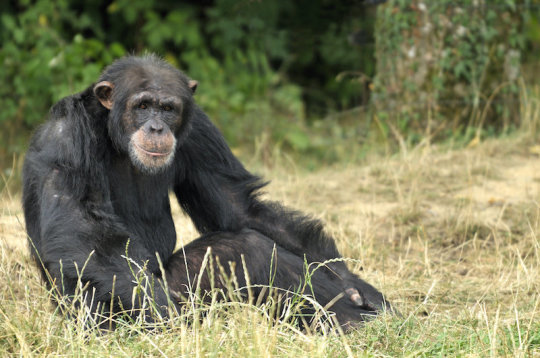 Chimpanzee/Stock image
Chimpanzee/Stock imageRecently, researchers discovered chimpanzees in Guinea, West Africa, for whom freshwater shellfish were a year-round dietary staple. From ScienceDaily:
The study began in 2012 when the researchers first observed the chimpanzees fishing for crabs. For two years, they documented the demographics and behavior of these chimps, while also analyzing and comparing the nutritional value of the crabs to other foods in the chimpanzees’ diet.
Crabbing, they learned, not only took place year-round — without regard to season or fruit availability — but intriguingly was negatively correlated with the chimps’ consumption of ants, another diet staple. Mature males were the least likely to consume aquatic fauna.
“Energy and sodium levels in large crabs are comparative with ants,” explains Koops, “leading us to hypothesize that crabs may be an important year-round source of protein and salts for females — especially when pregnant or nursing — and for growing juveniles.”
The study further sheds light on our own evolution, by showing that fishing behaviors may not be restricted by habitat as initially assumed.
“This isn’t the first case of non-human primates eating crabs,” points out senior co-author Tetsuro Matsuzawa, “but it is the first evidence of apes other than humans doing so. Notably, previous observations were from monkey species in locations consistent with aquatic faunivory — lakes, rivers, or coastlines — and not in closed rainforest.”
“It’s exciting to see a behavior like this that allows us to improve our understanding of what drove our ancestors to diversify their diet.”
Paper. (paywall) – Kathelijne Koops, Richard W. Wrangham, Neil Cumberlidge, Maegan A. Fitzgerald, Kelly L. van Leeuwen, Jessica M. Rothman, Tetsuro Matsuzawa. Crab-fishing by chimpanzees in the Nimba Mountains, Guinea. Journal of Human Evolution, 2019; DOI: 10.1016/j.jhevol.2019.05.002 More.
This is a classic “evolution” story—the discovery is interesting but the extrapolations are pretty far-fetched. And it’s understood that we are just supposed to accept them at face value. Some questions:
1, Why did researchers assume that chimpanzees wouldn’t eat shellfish if they were easy enough to catch? After all, they were willing to eat ants.
2. Why assume that shellfish gathering is restricted by habitat?
The human evolution hook is “The study further sheds light on our own evolution, by showing that fishing behaviors may not be restricted by habitat as initially assumed.” But why did the researchers assume that fishing would be restricted by habitat? Hungry animals eat what they can.
Also: “It’s exciting to see a behavior like this that allows us to improve our understanding of what drove our ancestors to diversify their diet.” Hunger wasn’t a strong enough driver?
If a minor note about chimpanzee behavior needs to be inflated into a claim about human evolution, that’s most likely because not much is known about human evolution and what is known does not fit the grand narrative. Talk about a fishing expedition!
Some other human evolution claims: Eating fat, not meat, led to bigger human type brains, say researchers.
Earlier discussion of the fat theory.
Starchy food may have aided human brain development
Do big brains matter to human intelligence?
Human evolution: The war of trivial explanations
and
What Taragana
A 1980 N.Y.Times article
Below is a New York Times News Service article that appeared Nov 5, 1980, reporting on a meeting at the Chicago Field Museum of Natural History. The discussion of micro- and macroevolution and of the fossil record almost sounds like something from the Discovery Institute blog, the kind of honest assessment of Darwinism which today could cause a biology teacher to lose his/her job. The Times writer assures us, however, that all of this does not suggest “weakness in the fact of evolution”, only in the “perceived mechanism.” He says it actually “reflects significant progress toward a much deeper understanding of the history of life on Earth,” a statement I would certainly agree with! A photocopy of the article as I clipped it from the Houston Chronicle can be seen here.
I have now added a short discussion (2:00-3:30) of this article to my video Why Evolution is Different, embedded at the bottom. I have presented earlier versions of this video here, but have redone it several times recently, and I think it is stable now and presents a good summary of the main arguments for intelligent design.
Biology’s understanding of how evolution works, which has long postulated a gradual process of Darwinian natural selection acting on genetic mutations, is undergoing its broadest and deepest revolution in nearly 50 years.
At the heart of the revolution is something that might seem a paradox. Recent discoveries have only strengthened Darwin’s epochal conclusion that all forms of life evolved from a common ancestor. Genetic analysis, for example, has shown that every organism is governed by the same genetic code controlling the same biochemical processes. At the same time, however, many studies suggest that the origin of species was not the way Darwin suggested or even the way most evolutionists thought after the 1930s and 1940s, when Darwin’s ideas were fused with the rediscovered genetics of Gregor Mendel. Exactly how evolution happened is now a matter of great controversy among biologists. Although the debate has been under way for several years, it reached a crescendo last month, as some 150 scientists specializing in evolutionary studies met for four days in Chicago’s Field Museum of Natural History to thrash out a variety of new hypotheses that are challenging older ideas. The meeting, which was closed to all but a few observers, included nearly all the leading evolutionists in paleontology, population genetics, taxonomy and related fields. No clear resolution of the controversies was in sight. This fact has often been exploited by religious fundamentalists who misunderstood it to suggest weakness in the fact of evolution rather than the perceived mechanism. Actually, it reflects significant progress toward a much deeper understanding of the history of life on Earth.
At issue during the Chicago meeting was macroevolution, a term that is itself a matter of debate but which generally refers to the evolution of major differences, such as those separating species or larger classifications. Most agree that macroevolution is, for example, what made crustaceans different from mollusks. It is the process by which birds and mammals evolved out of reptiles. It is also what gave rise to major evolutionary innovations shared by many groups, such as the flower in higher plants or the eye in vertebrates.
Darwin suggested that such major products of evolution were the results of very long periods of gradual natural selection, the mechanism that is widely accepted today as accounting for minor adaptations. These small variations, considered products of microevolution, account for such things as the different varieties of finches Darwin found in the Galapagos Islands. Under human control, or “artificial selection,” microevolution has produced all the varieties of domestic dog, all of which remain members of a single species. Darwin, however, knew he was on shaky ground in extending natural selection to account for differences between major groups of organisms. The fossil record of his day showed no gradual transitions between such groups, but he suggested that further fossil discoveries would fill the missing links. “The pattern that we were told to find for the last 120 years does not exist,” declared Niles Eldridge, a paleontologist from the American Museum of Natural History in New York. Eldridge reminded the meeting of what many fossil hunters have recognized as they trace the history of a species through successive layers of ancient sediments. Species simply appear at a given point in geologic time, persist largely unchanged for a few million years and then disappear. There are very few examples—some say none—of one species shading gradually into another.
Copyright © 2019 Uncommon Descent . This Feed is for personal non-commercial use only. If you are not reading this material in your news aggregator, the site you are looking at is guilty of copyright infringement UNLESS EXPLICIT PERMISSION OTHERWISE HAS BEEN GIVEN. Please contact legal@uncommondescent.com so we can take legal action immediately.
Plugin by Taragana
June 5, 2019
New Scientist has seen signs of a mirror universe touching our own

So cool it’s got to be true:
The uncanny world on the other side of the mirror may not seem real to you. But Leah Broussard thinks parallel universes where everything is flipped might be very real indeed. Along with her colleagues at Oak Ridge National Laboratory in Tennessee, she is on the hunt for a universe that is identical to our own, but flipped so that it contains mirror atoms, mirror molecules, mirror stars and planets, and even mirror life. If it exists, it would form a bubble of reality nestling within the fabric of space and time alongside our own familiar universe, with some particles capable of switching between the two.
Michael Brooks, “We’ve seen signs of a mirror-image universe that is touching our own” at New Scientist
Broussard is about to do tests to find out if it is true. That’s fun, of course, but in reality, no one can prove it false and it will therefore always be real when cosmologists need it.
It would be still more fun to see Sabine Hossenfelder tackle this one.
See also: Sabine Hossenfelder summarizes multiverse theories, asks: Science or fiction? But with respect to the simulation multiverse: Why could there not be countless, helplessly infinite, simulations of the simulations as well?
Physicists: A mirror universe might explain dark matter
Did Stephen Hawking Discover A Means Of Detecting Parallel Universes Just Before He Died? That sounds a lot like grief talking but we’ll see.
Claim: Evidence, maybe, for parallel universes
Cosmologist: Parallel Universes Are Pushing Physics Too Far?
Alternate parallel universe found. Maybe (2015)
Test parallel universes for real?
Parallel universes TESTED?
Brit mid-market tabloid says Large Hadron Collider within days of discovering parallel universe
Scientific American tells us we may live in the past of a parallel universe
and why this is supposed to be science.
Copyright © 2019 Uncommon Descent . This Feed is for personal non-commercial use only. If you are not reading this material in your news aggregator, the site you are looking at is guilty of copyright infringement UNLESS EXPLICIT PERMISSION OTHERWISE HAS BEEN GIVEN. Please contact legal@uncommondescent.com so we can take legal action immediately.
Plugin by Taragana
Sabine Hossenfelder summarizes multiverse theories, asks: Science or fiction?

Sabine Hossenfelder, author of Lost in Math: How Beauty Leads Physics Astray, offeres a convenient list and summary of the various multiverse theories currently out there, including
Video games are getting better by the day, and it’s easy to imagine that maybe one day they will be so good we can no longer tell apart the virtual world and the real world. This brings up the question whether maybe we already live in a virtual world, one that is programmed by some being more intelligent than us and technologically ahead? If that is so, there is no reason to think that our universe is the only simulation that is going on. There may be many other universe simulations, programmed by superintelligent beings. This, too, is a variant of the multiverse.
Sabine Hossenfelder, “The multiverse hypothesis: Are there other universes besides our own?” at Back(Re)Action
But why not countless, helplessly infinite, simulations of the simulations as well?
She asks readers to let her know if they think these theories are science or fiction.
Some of us would say both. 
Researchers: Tools from 2.6 million years ago have been found
 Oldowan tools/WIKIPEDIA
Oldowan tools/WIKIPEDIANear the Lucy site:
That’s according to an analysis of 300 stone artefacts – including sharp-edged rock flakes and the rocks they have been chipped from, known as “cores” – published in the journal PNAS.
The new trove of artefacts was unearthed in Ethiopia’s Afar Basin, a region that rocketed to fame in 1974 when the 3.2-million-year-old remains of our ancient relative “Lucy” (Australopithecus afarensis) were discovered…
“By 2.6 million years ago, they were beginning to understand the relationship between the folk physics of where to strike something, and how hard to hit it, and what angles to select,” he says.
Dyani Lewis, “For those about to rock: the birthplace of humanity’s tool kit found” at Cosmos
Well, you have to start somewhere.
Paper. (paywall)
See also: Researchers: Early Human Toolkit (400 Kya) Showed Precision Toolmaking
and
Researchers: Complex Tools Don’t Show Ancient Humans Were Smart
Follow UD News at Twitter!
Copyright © 2019 Uncommon Descent . This Feed is for personal non-commercial use only. If you are not reading this material in your news aggregator, the site you are looking at is guilty of copyright infringement UNLESS EXPLICIT PERMISSION OTHERWISE HAS BEEN GIVEN. Please contact legal@uncommondescent.com so we can take legal action immediately.
Plugin by Taragana
Feathers arose 100 million years before birds
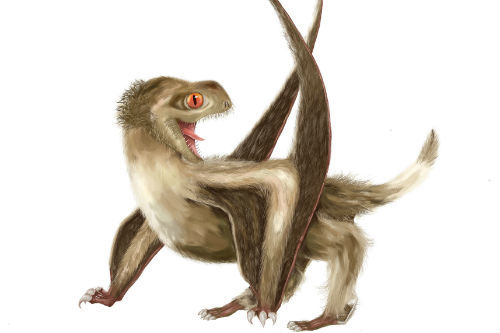
Pterosaur reconstruction/Yuan Zhang.
Researchers hope that their findings will change how we look at dinosaurs, birds, and pterosaurs, the flying reptiles:
The key discovery came earlier in 2019, when feathers were reported in pterosaurs – if the pterosaurs really carried feathers, then it means these structures arose deep in the evolutionary tree, much deeper than at the point when birds originated… Co-author, Baoyu Jiang from the University of Nanjing, added: “At first, the dinosaurs with feathers were close to the origin of birds in the evolutionary tree.
“This was not so hard to believe. So, the origin of feathers was pushed back at least to the origin of those bird-like dinosaurs, maybe 200 million years ago.”
Dr Maria McNamara, co-author from University College Cork, said: “Then, we had the good fortune to work on a new dinosaur from Russia, Kulindadromeus.
“This dinosaur showed amazingly well-preserved skin covered with scales on the legs and tail, and strange whiskery feathers all over its body.
“What surprised people was that this was a dinosaur that was as far from birds in the evolutionary tree as could be imagined. Perhaps feathers were present in the very first dinosaurs.” …
“So, the dinosaurs, pterosaurs and their ancestors had feathers too. Feathers then probably arose to aid this speeding up of physiology and ecology, purely for insulation. The other functions of feathers, for display and of course for flight, came much later.” “Feathers came first, then birds” at University of Bristol
Maybe those 200 mya feathers were just for insulation. But maybe there are more surprises yet. Marcos Eberlin is probably right. Evolution has Foresight. 
June 4, 2019
Native American creationism viewed favorably in a recent court ruling in Canada
In a land dispute. The authors quoted provide a picture of the judge in the case with the caption, “Captivated by Indigenous creationism: Justice Hennessy ignored historical evidence that the Ojibway were latecomers”:
Rather than sticking to the historical facts, Justice Hennessy extensively quoted an Ojibway elder’s account of his people’s cosmology and creation story, and then herself claimed: “As the last placed within creation, the Anishinaabe [Ojibways] could not act in ways that would violate those relationships that came before their placement on the land and that were already in existence across creation.” Setting aside her curious acceptance of Indigenous mythology as fact, we know that at the time of their “creation” the Anishinaabe could not have been placed in Northwestern Ontario. They originated on the Atlantic Coast and are essentially newcomers to the area, having arrived after European explorers.
Robert MacBain and Peter Shawn Taylor , “The Real Cost of Bad History” at C2C Journal
Post-truth science will not be, in principle, either positive or negative about creationism; everything depends on the role it plays in power struggles.
See also: Bret Weinstein, The Evergreen Prof Who Got SJW-D? It’s Partly The Fault Of Creationists! (Native American creationists)
and
Is there life Post-Truth?
Follow UD News at Twitter!
Copyright © 2019 Uncommon Descent . This Feed is for personal non-commercial use only. If you are not reading this material in your news aggregator, the site you are looking at is guilty of copyright infringement UNLESS EXPLICIT PERMISSION OTHERWISE HAS BEEN GIVEN. Please contact legal@uncommondescent.com so we can take legal action immediately.
Plugin by Taragana
Science journalist confronts evolutionary theorist with hard questions at his book talk
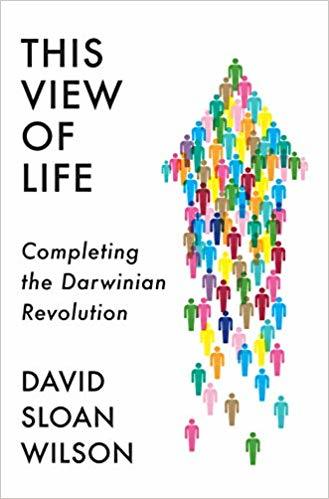
Suzan Mazur, author of Darwin Overthrown: Hello Mechanobiology, decided to attend a World Science Festival talk in New York by David Sloan Wilson, featuring his new book, This View of Life: Completing the Darwinian Revolution, but left after 35 minutes.
She asked him some awkward questions. So things didn’t go quite as he must have hoped:
Suzan Mazur: Excuse me, what do you mean by selection?
David Wilson: Selection? Natural selection.
Suzan Mazur: Natural selection has been debunked by the scientific community. David, you know that. You know that. Why are you lying to the public?
You know that. Look at Eugene Koonin. Look at Jerry Fodor. Look at Richard Lewontin.
Moderator: Let’s let him answer the question.
Suzan Mazur: He needs to seriously define what he means by natural selection.
Moderator: We’re not ready for the question yet.
Suzan Mazur: The whole thing [talk] doesn’t work if he doesn’t define it. More.
Suzan Mazur, “Part 3 — World Science Festival Feeds Public Bogus Science: The DS Wilson Sermon” at Oscillations
Yes, in one phrase, Mazur, author of Darwin Overthrown: Hello Mechanobiology, captures the problem: “he doesn’t define it.” Much Darwinism today survives on the fumes of “evolution” in general.
She certainly thinks evolution happened; it’s a substantial part of her body of work, to judge from her books on the subject. But what are the drivers of what happened?
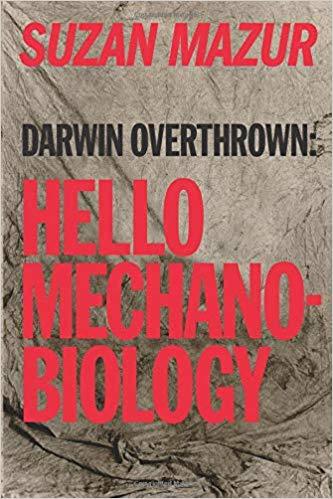
Everyone agrees that things change over time. The world is not now as it once was. But how do we explain that?
David Sloan Wilson is an exponent of a group or kin selection, an effort to mend the problems of fully Darwinian natural selection by providing a naturalistic explanation for altruism.
But there is a curious story there: Top Darwinian E. O. Wilson espoused and then abandoned group selection, in a remarkable turn of events:
But then [E. O.] Wilson dramatically abandoned kin selection in 2010 in a Nature paper, “The evolution of eusociality,” co-authored with mathematicians. He argued that strict Darwinism (natural selection) “provides an exact framework for interpreting empirical observations,” dispensing with the other theories he had promoted for decades. Over 140 leading biologists signed a letter to Nature, attacking the 2010 paper. Some called his new, strictly Darwin model “unscholarly,” “transparently wrong,” and “misguided.”
What? All this is said of a Darwin-only model?
New atheist evolutionary biologist Jerry Coyne has also weighed in, saying that Wilson et al. are “wrong–dead wrong.” Curiously, he admitted, “The “textbook” explanation, based on a higher relatedness of workers to their sisters than to their own potential offspring, no longer seems feasible. … But we’ve known all this for years!”
If so, he and fellow evolutionary biologists have been very economical with their accounts of the failures.
How else to account for the — to most people, incomprehensible — uproar?
Evolutionary psychologist David Sloan Wilson, defending E. O. Wilson, scolded, “This degree of illiteracy about foundational issues is an embarrassment for the field of evolutionary biology.” Denyse O’Leary, “Could we all get together and evolve as a group?” at Evolution News and Science Today:
At the time (2012, but it was still brewing), neuroscientist Michael Gazzaniga tried to mend matters by declaring everyone right, raising the question in the minds of many others, “But right about what?”
And that’s what made Mazur think she was wasting a “rare day in June.”
Hey, sometimes, in some place, somewhere, in imaginary time, it gets even better… (News’s all-time fave YouTube clip)
See also: Suzan Mazur: World Science Festival is purveying an out-of-date Darwinism She notes: “The problem with Wilson’s perspective is that Darwin’s theory of natural selection has been discredited. Biology is no longer the descriptive science it once was.” (Part I)
and
Suzan Mazur: World Science Foundation’s Evening on Mars “marred,” so to speak, by a second-rate panel She also reveals that a two-page survey was handed out, asking a number of none-o’-yer-business questions on behalf of “Audience Research & Analysis, an organization that helps government agencies and cultural agencies to “move forward with decision research.” (Part II)
Copyright © 2019 Uncommon Descent . This Feed is for personal non-commercial use only. If you are not reading this material in your news aggregator, the site you are looking at is guilty of copyright infringement UNLESS EXPLICIT PERMISSION OTHERWISE HAS BEEN GIVEN. Please contact legal@uncommondescent.com so we can take legal action immediately.
Plugin by Taragana
Michael J. Behe's Blog
- Michael J. Behe's profile
- 219 followers



